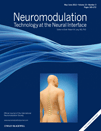 I would like to take this opportunity to share with you the knowledge I have recently received from the May-June 2012 issue of Neuromodulation: Technology at the Neural Interface; more specifically an article that by Dr. Elliott S. Krames entitled, A History of Intraspinal Analgesia, a Small and Personal Journey.
I would like to take this opportunity to share with you the knowledge I have recently received from the May-June 2012 issue of Neuromodulation: Technology at the Neural Interface; more specifically an article that by Dr. Elliott S. Krames entitled, A History of Intraspinal Analgesia, a Small and Personal Journey.
In this article, Dr. Krames gives a concise, informative, and often humorous review of intraspinal injections starting from when they were first considered in medical care. Delightfully, he begins with a picture of the opium poppy, where the raw opium latex is dripping from the incised seed capsule. Most of us in pain management are quite familiar with the opium poppy tears ““ also known as the lachrymal papaveris ““ where the dried latex is derived. He proceeds by providing a historical perspective of the uses of opiates, morphine, and intraspinal injections throughout the ages. A personally enjoyable aspect to this section of the article is when he talks about looking at the opiate-binding sites, and the search for these sites through studies. While considering these binding sites he asked, “Why else would they work” if there were not sites for the opioids, or morphine, to bind to? This research developed and ultimately led to an understanding of endogenous opioids ““ specifically enkephalins and endorphins.
I will jump ahead to a section entitled, “From the Bench to Clinical Realities” where Dr. Krames discusses the discovery of opioid pharmacology; reviews of various drugs; studies using mice, rats, rabbits, cats, dogs, sheep, etc.; and individuals, such as Dr. Tony Yaksh and Dr. Thomas Rudy, who contributed pivotal breakthroughs while studying receptors with various animals. One of my favorite sub-sections in this is “Cocktails for Two” where it is stated that, in 1979, Dr. Krames met with the head of Obstetrical Anesthesia at UCSF. Over cocktails the question, “Did you hear about the Israeli physicians utilizing morphine within the intrathecal space?” was uttered. It was like a revelation had occurred to the doctor. I can relate. I’ve had moments when I’ve learned of medical professionals creating a revolutionary new treatment; something so unique and cutting-edge that it energizes you. In the case of Dr. Krames, it was essentially a defining moment because as more research and endeavors occurred, they led him to becoming a pain doctor. I strongly urge you to read this section as there is good humor in both the time and era it occurred, and in the discussion of the doctor taking a leap and injecting an opioid intraspinally for the relief of cancer pain ““ and having great outcomes. It’s interesting to hear from individuals such as Dr. Krames regarding turning moments in their careers to researching something new and taking a calculated leap of faith to change career paths. Again, I can relate.
The article further mentions studies regarding intraspinal infusions, goes into detail regarding pharmacokinetics and pharmacodynamics, and addresses catheter tip masses ““ which Dr. Krames further details with cautionary advice. All of this work and research led to the development of clinical guidelines, and molded the origins of the polyanalgesic consensus committee’s (PACC) first publications. He asserts some of the logic behind the PACC’s recommendations, as well as insight into what caused the committee to change its initial recommendations. This article also acts as a mentoring document to assist pain practitioners of today and the future.
Dr. Krames finishes his article with images of the field’s pioneers. These individuals include doctors: Eric Buchser, Michael Cousins, Howard Fields, Eric Grigsby, Sam Hassenbuch, Robert Levy, John Oakley, Judith Paice, Richard Penn, Joshua Prager, Lisa Sterns, Tony Yaksh, and more.
To me, this is one of the most invaluable collections of information ““ there are over 170 references as well as comments by Dr. Lynn Webster, Mark Wallace, and John Loeser ““ all with whom I have had the pleasure of speaking with.
This is a must-read for all. Dr. Krames’ depth and breadth of knowledge is clearly displayed. This was a personally defining moment for me. I will read this article again and will research the references. My hat’s off to Neuromodulation, as well as to Dr. Krames for compiling this information for the future of medicine.
For more information regarding intrathecal drug deliveries, visit Hartley Medical’s Knowledge Center by clicking here.
Source:
Krames, E.S. 2011. A History of Intraspinal Analgesia, a Small and Personal Journey. Neuromodulation 2012; 15: 172-193.


Leave A Comment